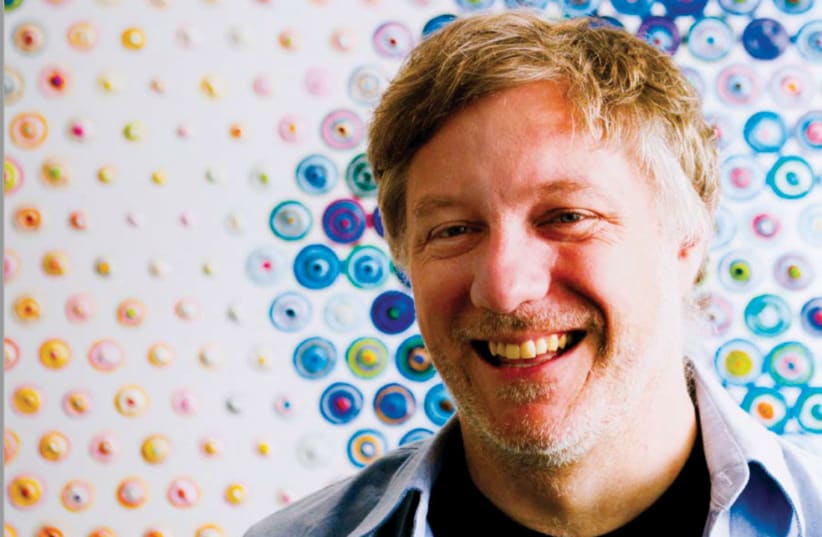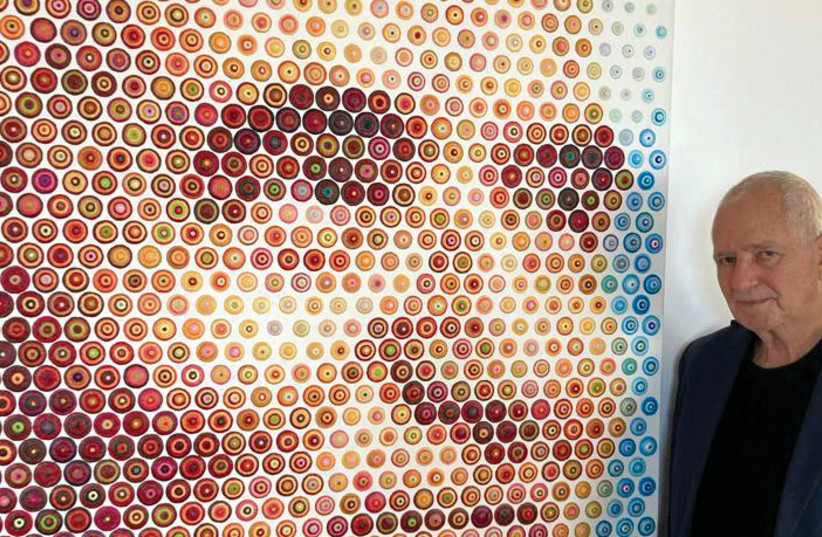There must be few professionals who view people’s faces with such intensity as the portrait artist. One such artist is South African Gavin Rain, whose collection of portraits of 12 prime ministers of Israel is on show within the framework of the Jerusalem Biennale coinciding with Israel’s 75th Independence Day celebrations.
Rain, who is not Jewish, had no idea about Jews, Judaism or Israel before he was approached by fellow South African Myron Zaidel in 2019 with the commission.
“Myron is the real driving force behind the whole project,” explained Rain in an interview from South Africa. “He wanted something to accompany his own immigration to Israel. So he approached me. Initially, I declined. I’m used to doing portraits of women, especially famous ones like Marilyn Monroe, Princess Diana and Brigitte Bardot. Women’s faces are much easier to capture in paint. Their lines are softer, more elegant, easier to capture in the technique I use.”
“He wanted something to accompany his own immigration to Israel. So he approached me. Initially, I declined. I’m used to doing portraits of women, especially famous ones like Marilyn Monroe, Princess Diana and Brigitte Bardot. Women’s faces are much easier to capture in paint. Their lines are softer, more elegant, easier to capture in the technique I use.”
Gavin Rain
This technique is based on the pointillism style made famous 100 years ago by Georges Seurat and Paul Signac and more contemporary, Chuck Close. Gavin’s use of this technique is reflected in his acrylic paintings which are comprised of multi-layered and multicolored concentric circles on a white canvas and can only be appreciated when the viewer steps back.
“Men tend to have harder lines, and their facial hairs make their faces far more complicated,” Rain explained. “However, I had already painted a portrait of Einstein and of a rabbi, so I did have some experience of doing portraits of men. I told Myron that I would experiment with the portrait of Ben-Gurion but that if it didn’t work, I would give up the project. In the end, I realized that Ben-Gurion would be an exception. I would make his portrait larger in order to include his iconic hair! In fact, his hair made his portrait more recognizable than if I had just painted his face. I painted his portrait on a canvas 1.8 meter x 1.2 meter. All the other prime ministers I painted within a one-meter square frame. There were other problems; for example, when I had to paint the spectacles of Menachem Begin. But these were technical problems that I was able to resolve using my pointillist technique.”
Rain’s paintings are made up of about 1,000 dots, although each of these dots is multicolored and makes sense visually only when seen from the right distance. Optic researchers prove that at a distance, these multicolors are perceived by the brain as one color. By deconstructing the face through these dots, Rain is able to put it back in a way that the viewer is challenged. The viewer is very much part of the process of their creation. The eye that beholds these paintings literally “connects the dots,” so that what appears as separate splodges of color become a fluid, integrated painting when viewed at the right distance. “It is a metaphor for life,” Rain said. “We should all step back to see the bigger picture, the people that help, guide and shape us. I like to try echoing that in my work if I can.”
His first academic degrees included neuro-psychology, and this certainly has had an influence on how he observes his world: “I spend my time looking at faces. Everyone has similar elements in their faces – a mouth, nose, eyes and so on. The ratio between them may be slightly different, but the reality of it is that a person is greater than his or her features. To really do a portrait, you have to capture the essence of that person, a person that you may not know but that you can somehow intuit it from all the elements of the face. I don’t think artificial intelligence, which is so popular these days, can capture this essence. I’ve seen a portrait of Marilyn Monroe, for example, ‘created’ by AI; but although all her features were there, it lacked her essence. But who knows what the scientists will come up in the future?”
The challenges in paintings of Israel's prime ministers
With the 12 Israeli prime ministers, Rain was faced with multiple challenges. Firstly because most of them are no longer alive. Not that this is an insurmountable issue. “The way I do a portrait, it would be impossible for a subject to sit that long for me to do the work from life. Most of my time is taken up in the preparation of the portraits, which includes making a grid and then working out what color combinations I need to fill each part of the grid. If you look carefully, you can see that I use the same combinations of color in a number of the paintings. I go through this process before I apply my brush to the canvas. No sitter could be expected to wait that long for me to begin a portrait. This is why I paint from photographs.”
For the portraits of Israel’s prime ministers, he was faced with other issues: “Politicians are very complex. They have a number of levels to them, which show up in their faces, although they probably try to hide some of them. In Mandarin Chinese, they have an expression relating to the inner beauty and the outer beauty. To paint these portraits, you have to acknowledge these two levels. So with Golda Meir, for example, she always had a very tough determined look about her. She was clearly highly motivated. I realized as I was painting these people that I really didn’t understand them, nor could I ever. Their motivations are very different from yours or mine.”
By contrast, Myron Zaidel was very inspired by these people. He researched each of them and wrote about them in the book which accompanies the exhibition and contains the portraits. These essays preceded Rain’s work. In fact, the artist says he took his descriptions and his vision from Zaidel. “This was his personal passion,” said Rain. “I took his understanding of these people as correct and produced my portraits accordingly.”
Rain’s unique paintings have been displayed all over the world. “During COVID, however,” he recalled, “there were no exhibitions. But now I have been asked to open six exhibitions during this current year. I’m not even certain that I can make it to Jerusalem during the exhibition, although I would dearly love to.”
Rain’s list of exhibitions is impressive. How did he explain his popularity that encompasses such a wide variety of audiences? He is aware that his realistic paintings do not chime in with much of contemporary art. He has a rather negative opinion of much abstract art. In fact, apart from artists like Marc Rothko, he really doesn’t like abstract art. “People want intent and meaning in art,” he summarized. “That is what I try to deliver. Art is a conversation.” . ■
The exhibition “Prime Ministers in Perspective” extends from April 24 to May 7 in Jerusalem.













